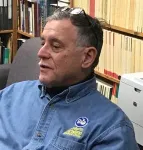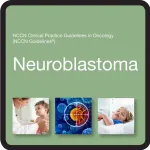(Press-News.org) In a new study, Tokyo Medical and Dental University researchers shed light on partial endothelial-to-mesenchymal transition in the tumor microenvironment
Tokyo, Japan - Endothelial-mesenchymal transition (EndoMT, also termed as EndMT), a biological process resulting in the formation of mesenchymal (or lineage-committed) phenotypes from endothelial cells (lining blood vessels), plays a crucial role in tumor progression. Despite the important role of EndoMT, the underlying mechanism and characteristics of cells in intermediate/partial EndoMT remain largely unexplored. Now, researchers from Japan have developed a system to study these EndoMT stages.
In a study published recently in Cancer Science, researchers from Tokyo Medical and Dental University (TMDU), Japan, report a system that can detect the intermediate and full stages of EndoMT. Named “EndoMT Reporter Endothelial Cells (EMRECs),” this novel reporter cell experimental system enables the visualization of the sequential changes that occur during EndoMT induced by transforming growth factor-β (TGF-β). TGF-β is a cytokine found abundantly in the tumor microenvironment (TME) and is known to play a key role in EndoMT.
“In the present study, we established EMRECs to be able to visualize EndoMT transition in real-time and identified specific genes expressed in partial EndoMT during diseases like cancer,” explains the lead author of the study, Dr. Kazuki Takahashi.
To visualize the intermediate stages of EndoMT, the researchers developed an EndoMT-reporter transgenic mouse that expressed a red fluorescent protein under the control of an endothelial cell-specific marker and a green fluorescent protein under the control of α-smooth muscle actin (αSMA), a mesenchymal cell marker. Cells of endothelial lineage derived from this transgenic mouse would emit red fluorescence, providing insight into the endothelial lineage. EMRECs were established using immortalized endothelial cells from the transgenic mouse liver. Once EMRECs acquired mesenchymal cell characteristics, they would emit green fluorescence due to the expression of αSMA—a mesenchymal cell marker—resulting in a gradient change from orange to yellow, as cells express both the endothelial-lineage and mesenchymal markers. In addition, simultaneous detection of the expression of the endothelial cell marker ‘vascular endothelial growth factor receptor 2 (VEGFR2)’ in EMRECs can provide a more detailed understanding of the EndoMT sequential stages: the full EndoMT stage would no longer express VEGFR2, but the partial EndoMT stages with both endothelial and mesenchymal properties would still express VEGFR2.
Quantitative RT-PCR (qRT-PCR) and immunohistochemical analyses of EMRECs revealed that treatment with TGF-β increased the expression of αSMA and lowered the expression of VEGFR2, indicating that EMRECs underwent TGF-β-induced EndoMT. Also, inhibition of TGF-β signaling in a human oral cancer xenograft mouse model reduced the ratio of cells expressing both endothelial and mesenchymal markers (indicating EndoMT) in tumors, suggesting that TGF-β inhibition suppresses EndoMT.
To observe the sequential changes of gene expression during EndoMT, the researchers cultured EMRECs with and without TGF-β treatment and used cell sorting assays to specifically pick up cells in stages of partial EndoMT, along with cells that underwent full EndoMT.
Furthermore, by performing RNA sequencing analysis and comparing the cell population of each EndoMT stage, they identified CD40, a surface receptor involved in inflammation, which could serve as a potential partial EndoMT marker, highlighting its crucial role in studying the EndoMT mechanism. Elaborating further, senior author Dr. Miho Kobayashi remarks, “Interestingly and for the first time, our results have revealed CD40 as a potential partial EndoMT-specific marker. This is because high CD40 levels were observed in partial EndoMT cell population, but low levels were observed in endothelial and full EndoMT cell populations. We were further intrigued that CD40 suppressed the transition from partial to full EndoMT.”
The team also validated tumor tissue samples from 226 patients across 10 solid cancer types by single-cell RNA sequencing analysis and found that the EndoMT pathway results in the formation of cancer-associated fibroblasts (CAFs) through CD40-positive partial EndoMT. CAFs are known to contribute to cancer progression and metastasis.
Adding further, senior author Dr. Tetsuro Watabe says, “The EMRECs established in our study can be used for multiple purposes, such as for evaluating the dynamics and distribution of EndoMT in pathological conditions, studying the efficacy of therapeutic agents by live imaging, and screening novel therapeutic drugs targeting each EndoMT stage.”
On the whole, these findings improve our understanding of the mechanisms underlying EndoMT, paving the way for novel therapeutic strategies that target EndoMT-mediated cancer progression and metastases.
###
The article, “CD40 is expressed in the subsets of endothelial cells undergoing partial EndoMT in tumor microenvironment,” was published in Cancer Science at DOI: 10.1111/cas.16045
END
COLUMBUS, Ohio – After serving decades in prison, Rwandans convicted of crimes of genocide returned to their communities articulating a “narrative of redemption,” saying they were good people, despite their past crimes.
And they were hopeful about their prospects for reintegrating into their communities.
Many of these former prisoners had been convicted of murder, often of their own neighbors, connected to the 1994 genocide in Rwanda. But they said they had changed – even while minimizing their role in the killings.
In ...
Fukuoka, Japan—Researchers at Kyushu University have found that Japan's current policy of stopping the sale of gas vehicles by 2035 and transitioning only to hybrids and electric vehicles may be insufficient to reduce the country's CO2 emissions and prevent it from reaching its decarbonization target goals. In fact, emissions may temporarily increase.
The team's analysis showed that along with the policy, the Japanese government must simultaneously work to increase production of clean ...
The European project entitled “Bone, Brain, Breast and Axillary Medical Microwave Imaging Twinning (3BAtwin)” has been awarded with €1.5M to reinforce our training on Medical Microwave Imaging (MMWI). The project is led by the Faculty of Sciences of the University of Lisbon (Ciências ULisboa) (Portugal), in collaboration with University of Galway (Ireland) and Turin Polytechnic University (Italy).
The goal of this twinning project is to accelerate the transition of Medical Microwave Imaging “from the research bench ...
PLYMOUTH MEETING, PA [February 7, 2024] — The National Comprehensive Cancer Network® (NCCN®)—an alliance of leading cancer centers—today published its first ever set of treatment recommendations pertaining to neuroblastoma. Neuroblastoma is a type of solid tumor cancer that typically occurs in early childhood, with the majority diagnosed before age five.[1] Neuroblastoma is the most common type of solid tumor (outside of brain tumors) in children, with more than 700 cases diagnosed in the United States every year.[2] Research innovations ...
Highlights:
Alterations in gut microbiota may influence immune system changes during pregnancy.
However, the connection isn’t well known.
Researchers in China analyzed gut microbiota, metabolites and cytokines in healthy pregnant and non-pregnant young women.
The new study identifies numerous pathways by which the gut microbiome may change the immune system.
Washington, D.C.—During pregnancy, a woman’s immune system changes dramatically but researchers don’t yet understand all the underlying mechanisms. A new study shows how the gut microbiota may play a role.
In a paper published this week in mSystems, researchers in China report that during pregnancy, ...
Highlights:
Wastewater, even when treated, can deliver antimicrobial resistance genes to rivers.
Further research is needed on if rivers function as a protective barrier.
Researchers subjected biofilms from pristine rivers to wastewater.
Antibiotic resistant bacteria from wastewater successfully integrated at first, but in the warmest water were edged out by naturally occurring microbes.
The study suggests that temperature can influence the microbial competition in rivers.
Washington, D.C.—Antimicrobial resistant genes (ARGs) from wastewater can end up in natural biofilms in rivers, but they may not stick around very long. This week in mSphere, ...
Accelerating Innovation in Medicine - Health Initiative (AIM-HI) is proud to celebrate a significant milestone in the journey of one of its esteemed portfolio companies, Yiviva. A clinical-stage platform biotechnology company, Yiviva has entered into a Memorandum of Understanding (MOU) with AstraZeneca China, a multinational biopharmaceutical leader.
AIM-HI exists to support bold new ideas in treating and preventing cancer. So when Yale Professor Yung-Chi Cheng approached us years ago about mining ancient Chinese herbs for modern therapies, we took notice. Other investors ...
DALLAS, Feb. 7, 2024 — Research teams from Northwestern University Feinberg School of Medicine, New York University and Duke University will work together to assess the accuracy of the American Heart Association’s new PREVENTTM risk calculator with funding from the Association’s De-biasing Clinical Care Algorithms project.
The American Heart Association, celebrating 100 years of service in 2024, is the single largest non-government supporter of heart and brain health research in the U.S. The de-biasing project is funded by a grant from the Doris Duke Foundation to study the role of race and ethnicity in clinical equations and their ...
Geographic sorting along ideological lines is on the rise. Counties and regions of the United States differ in political ideology. But do they differ in personality as well? Further, are people who ‘fit’ their communities healthier, happier, or more highly achieving than those who do not?
In the context of these growing divisions and to address this question, a study by Florida Atlantic University’s Kevin Lanning, Ph.D., senior author and a professor of psychology and data science in the Harriet L. Wilkes Honors College on FAU’s John D. MacArthur Campus in Jupiter, and ...
One of the most important components of satellites that enable telecommunication is the waveguide, which is a metal tube for guiding radio waves. It is also one of the heaviest payloads satellites carry into orbit. As with all space technology, reducing weight means reducing the amount of expensive and greenhouse gas-producing fuel it takes to launch a rocket, or increasing the number of devices carried by the same rocket to space. Researchers from Drexel University and the University of British Columbia are trying to lighten the load by creating and testing a waveguide made ...








